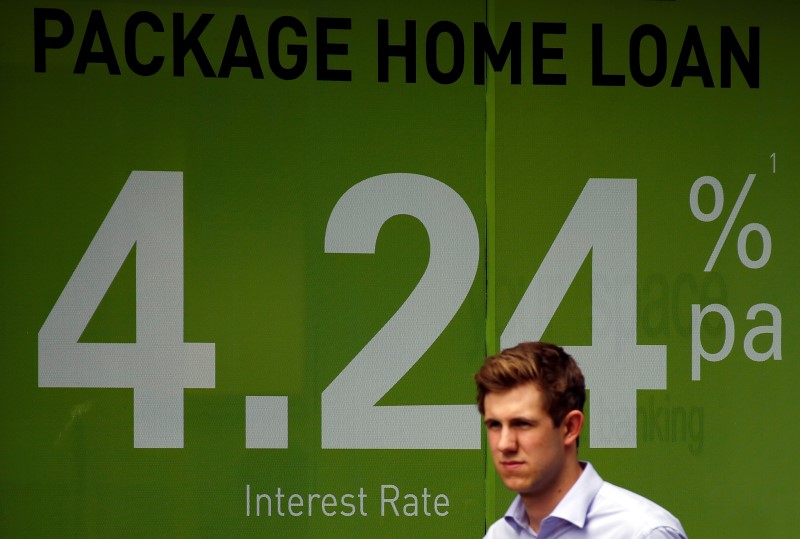* Home lending to investors down 1.4 pct in May to nine-month low
* Value of cancelled loans soar to a 10-month high
* Lending to owners up 1 percent vs 1.9 pct fall in April
* 'Home loan data had the right mix in May' - economist
By Swati Pandey
SYDNEY, July 11 (Reuters) - Home lending to property investors in Australia fell for a second straight month in May, early evidence that curbs enforced by regulators to cool the country's red-hot property market was starting to bite.
Tuesday's data from the Australian Bureau of Statistics (ABS) showed investor lending shrank 1.4 percent in May, from April, to hit a nine-month trough.
Importantly, the value of cancelled loans climbed about 17 percent to a 10-month high of A$1.44 billion as more people pulled out of deals, a sign tighter lending standards and rising mortgage rates were changing investor behaviour.
At the same time, lending to owner occupiers edged up 1 percent, while loans for construction climbed for a fourth straight month and promised to boost supply.
"The home loan data had the right mix in May - more loans to budding home owners and fewer loans to investors," said James Craig, chief economist at CommSec.
"It is also important to remember that lenders may agree to provide finance to buy a home but borrowers may not take up the offer. More budding property owners are getting cold feet and not going through with the deal."
The Reserve Bank of Australia (RBA), long worried that debt-fuelled speculation in property could ultimately hurt both consumers and banks, will welcome the much-awaited slowdown in lending.
Household debt is already at 190 percent of disposable income and was a major reason the RBA left interest rates at an all-time low of 1.50 percent this month.
Instead, policy makers have tightened rules on home lending and particularly on interest-rate only loans massively favoured by property speculators. led the banks to hike rates on interest-only debt in both April and June. Growth in home prices seems to be moderating in response though it remains uncomfortably strong in the two major markets of Sydney and Melbourne. in the capital cities rose an annual 9.6 percent in June, down from a peak of 12.9 percent in March. Sydney was growing at 12.2 percent while Melbourne fared better at 13.7 percent.
Even so, economists said it was premature to call a peak in the housing market, noting that a similar easing off in prices in 2016 proved all too brief.
"Auction activity and price growth show a material slowdown coming through, although both remain fairly mild to date," said Westpac economist Matthew Hassan.
"Given the banks made a second round of loan rate increases in June, a full picture is unlikely to emerge until much later in the year."
